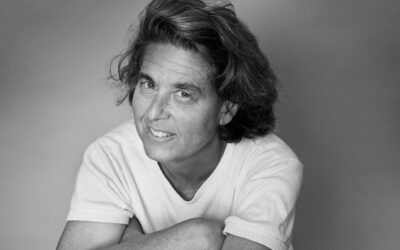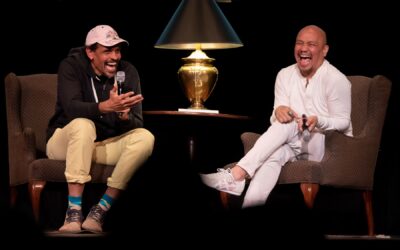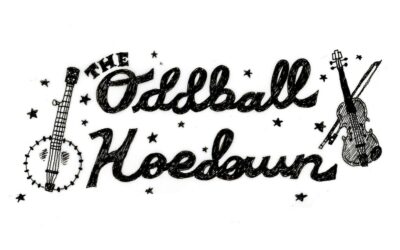I visited Wichita last fall when posters at Watermark Books advertised a book talk by Timothy Egan about his latest, A Pilgrimage to Eternity, at a church just a block away from the bookstore. I was excited to hear him speak; he wrote one of my favorite pieces of literary journalism, “The Worst Hard Time, about survivors of the Dust Bowl.” My forester friends tell me they loved The Big Burn (about the nation’s biggest wildfire in 1910); and Short Nights of the Shadowcatcher (about how Edward Curtis photographed and documented America’s native cultures) has been on my to-read for years.
If I didn’t already respect Egan’s environmental and social consciousness, I might not have given Pilgrimage a second glance. Books on a formalized religion? A religion I grew up with and later left behind? Not really my thing. But prompted by the event, and alone in a new city, I bought the hardback and started reading it immediately. What I found is that Egan provides background and language for a non-theologian seeking a more fluent understanding of Christianity’s troubled history. Two days later, I made my own little pilgrimage from the wine bar across from Watermark down to the church, only to find that I was a week early. By then I was already hooked on the book and finished it anyway.
See, religion might not be Timothy Egan’s thing, either. Like me, he left his church for philosophical and personal reasons, which emerge throughout his story. Nevertheless, he walks the Via Francigena pilgrimage trail from Canterbury, England, to Rome “in search of a faith,” using the route to examine Europe’s history of Christianization — while opening up about his own doubts and hopes for new beliefs. “You’ve prepared for a journey of more than a thousand miles by walking hills and stairs . . . by shedding weight and inconvenient thoughts,” he tells himself in a pep talk during the book’s opening paragraph. “The goal is to be fresh, open to possibility.” The personal tone marks a major departure from his past six books and welcomes readers like myself to be openminded as well.
Egan has spent a career documenting how underdogs survive social and environmental stresses. I was surprised to realize that in this book, it’s Christianity itself that’s the underdog. While 7 in 10 Americans are Christian, the same ratio of young people in Europe say they have no religion. Thousands of places of worship stand shuttered or demolished. “If White Anglo-Saxon Protestants were indeed the rootstock of the United States, then the mother land is nearly barren,” Egan writes.
So off he goes to not only examine how Christianity is crumbling but discover places where faith has endured. While the spine of this narrative is geographically linear, each location along the route invokes remarkable tales of “martyrs, madmen, or monarchs.”
For instance, Saints Jerome and Augustine lived like hedons in their early lives yet translated the Bible from Greek to languages evoking condemnation. Their interpretations influenced centuries of Christian-on-Christian killing where power swung hard from one branch of Christianity to another, often accompanied by bloodshed. This faith built on a nonviolent Jesus has justified rape, murder and large-scale wars (17 million people died in World War I alone, Egan notes at a French city wiped out during the war). It’s impossible to ignore the hypocrisy.
In Corbe ́ny, where Joan of Arc stayed the night with King Charles VII (in separate quarters), Egan pauses in front of commemorative plaque to ask, “What if Joan had made love to one of the men who worshipped her?” Would she still have the same place in Christian mythology? “Not likely. For the story of Joan the Virgin is also the story of a faith trapped in a logical and biological incongruities.” In this way, the author uses Via Francigena’s every site — marking miracle or massacre — as a chance to explore the Christian story.
Egan never exactly shakes off the factual, self-assured tone of a history and opinion writer, but he softens his account with travel, art, architecture and food writing. Joined at times by his wife, son, daughter, fellow pilgrims, ghosts of the past and worries about the future, the author does his best to weave his own personal journey in with the historical terrain he explores.
Egan also articulates his own desire for spiritual truth. In a time when society seems especially polarized, Pilgrimage sympathizes with those whose inclination is not to turn away from each other but rather to dig deeper and find our common hopes, traumas and possibilities. Toward the end of the journey, Egan ceremonially discards a talisman representing the “chips on my shoulder.” After hundreds of miles reflecting on humans’ experience as long ago as the Iron Age, his grievances against others seem unimportant.
Eagan’s obvious enjoyment of the embodied aspects of pilgrimage helps the reader to live vicariously through his experiences. His detailed descriptions of meals create breathing room around heavier topics while making us aware of physical here-ness. In a particularly joyous passage in Italy, rain falls and mushrooms emerge and cooks sing while making that night’s supper. When his wife surprises him by eating pork, she reminds him they walked 20 miles that day. Pilgrimage pushes you beyond boundaries. Surely that’s another way to spiritually grow.
I suppose I saw something of myself in the author, despite our generational, gender and religious background differences. We both grew up in churches. We rejected the dogma. And although we occasionally look back, we seem resolute in living without a religious community. But like me, Egan wonders what we lose when we distance ourselves from religion. Wonder, understanding and devotion top the list. He wants to believe the pope when he says, “Allow yourself to be amazed.” He expresses disappointment at his children’s ignorance of basic religious traditions. And he writes admiringly about monks who illuminated early manuscripts and others who perfected champagne, monks whose “labors were a form of prayer — doing something good and well and dutifully until it was close to perfect, a tribute to the creator.” As his son and daughter come to join Egan on the trail, he checks in on their spiritual grounding and expresses regret that he parented them with a distanced view of faith.
Those of us who think we’ve left religion behind might be tempted to skip reading about this particular journey “in search of a faith.” Don’t. Whether we directly participate in a church or not, the rhythms of Christian religion drive existence in the Midwest and the Western world. Learning more about how our society got to where we are can only help us learn and grow. And pushing our edges to examine our own faith (or lack thereof) is a step toward self-understanding. As Egan quotes Pope Francis, “Our kids should be open enough to allow themselves to be surprised, and not foreclose on the idea that a great faith, though flawed, can contain great truths.” Reading this book could prompt us expand our spirituality — and it might just inspire readers to make their own pilgrimages, whatever that means to them.



